
Budding backyard scientists can start exploring their world with this stunning introduction to these flowery show-stoppers — from seeds to roots to blooms. Learning how flowers grow gives kids beautiful building blocks of science and inquiry.
What’s Inside a Flower?

Dip in or start at the beginning to follow the trail to amazing, unique, and always intriguing tidbits of information about a world of animals. Silly and often laughable illustrations open the format for an open and appealing book.
Animal FACTopia! Follow the Trail of 400 Beastly Facts

What is wind? How does it help people and animals? Is there wind in space? These and other intriguing questions are asked then briefly answered on each briskly illustrated double page spread. Though there is no back matter, both author and illustrator thank authoritative sources.
Wind

Though a whale dies and sinks to the ocean floor, it creates life that is sustained for another 50 years. Illustrations evoke the deep water while introducing the various creatures that come to feed on the carcass over time. Additional information adds depth to the riveting exploration.
Whale Fall: Exploring an Ocean-Floor Ecosystem

Have you ever looked up and wondered what’s up there? Voyager 2 joined Voyager 1 as only the second interstellar spacecraft to explore the solar system up close. Evocative illustrations and a narrative by the spacecraft is likely to intrigue budding astronomers and set them on a course for further information.
The Sky Is Not the Limit

Lush illustration in an accessible format demonstrates the wonder of plants. From how they breathe (and help other organisms breathe) to how they cooperate with other creatures, and more is included. A table of contents and glossary (though no additional resources) conclude the brief, attractive, and informative presentation.
The Language of Plants

Sophisticated readers will enjoy this poetic exploration of light. Luminous illustrations show light’s variations in both the familiar and abstract as a child awakens to first light, and later views stars — after all, “light speaks.” Back matter includes brief information about light and related light topics.
Light Speaks

DK Eyewitness Books: Robot

When Ms. Frizzle drives the Magic School Bus full speed ahead into the ocean, the class takes a submarine expedition that’s anything but ordinary. With a well-meaning lifeguard in tow, the class takes a deep breath and learns about hot water vents, coral reefs, plant and animal life on the ocean floor, and more!
The Magic School Bus on the Ocean Floor

Some people collect stamps. Other people collect coins. Carol Otis Hurst’s father collected rocks. Nobody ever thought his obsession would amount to anything. They said, “You’ve got rocks in your head” and “There’s no money in rocks.” But year after year he kept on collecting, trading, displaying, and labeling his rocks. The Depression forced the family to sell their gas station and their house, but his interest in rocks never wavered. And in the end the science museum he had visited so often realized that a person with rocks in his head was just what was needed.
Rocks in His Head

This book provides a good introduction to basic science concepts like photosynthesis, gravity, and the sun’s effect on weather in an easy-to-understand format. Science vocabulary such as “nuclear fusion,” “electromagnetic energy,” “photosphere,” are explained in both text and illustrations. The book includes 10 comic-strip-style panels of “Did You Know?” interesting facts.
Why Do Elephants Need the Sun?

When 14-year-old William Kamkwamba’s Malawi village was hit by a drought, everyone’s crops began to fail. Without enough money for food, let alone school, William spent his days in the library … and figured out how to bring electricity to his village. Persevering against the odds, William built a functioning windmill out of junkyard scraps, and thus became the local hero who harnessed the wind.
The Boy Who Harnessed the Wind

Each book in this new series for younger readers contains spreads featuring fun, kid-friendly experiments with lift-the-flap conclusions. I’m a Scientist: Backyard introduces kids to the world of botany with a wealth of plant-based experiments.
I’m a Scientist: Backyard
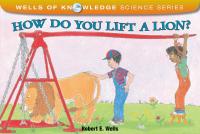
A basic introduction to levers, wheels, and pulleys. As two children lift a lion, pull a panda, and deliver a basket of bananas to a baboon party, kids find out how these simple machines work.
How Do You Lift a Lion?
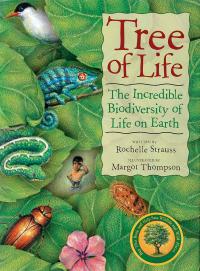
A dazzlingly illustrated and child-friendly introduction to the complex topic of biodiversity and classification, and how all living things, from bacteria to the largest mammals, are related. The book provides detailed information about each of the “five kingdoms” and the different species that make up each kingdom.
Tree of Life: The Incredible Biodiversity of Life on Earth
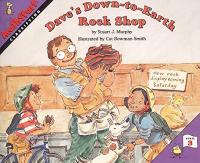
After Josh receives a strange rock from his uncle, he consults a rock shop owner expert to learn about his unusual gift. Josh notices that the store’s display window features stones arranged by size, and as his knowledge of geology grows, he sees the classification schemes in the window becoming more and more complex.
Dave’s Down-to-Earth Rock Shop
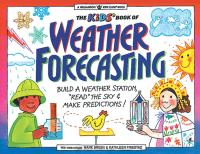
In this hands-on science book, kids learn how to make a barometer, record their observations in a Weather Log, use graphs and charts, read the cloud and wind direction, and look to the sunset glow to make more accurate predictions.
The Kid’s Book of Weather Forecasting

The inspiring life and history of George Washington Carver, from a baby born into slavery to celebrated botanist, scientist, and inventor. When George Washington Carver was just a young child, he had a secret: a garden of his own, and it was in this very place that George’s love of nature sprouted into something so much more — his future. His passion and determination are the seeds to this lasting story about triumph over hardship.
The Secret Garden of George Washington Carver

The story of Charles Henry Turner, the first Black entomologist — a scientist who studies bugs. Can spiders learn? How do ants find their way home? Can bugs see color? All of these questions buzzed endlessly in Charles Henry Turner’s mind. He was fascinated by plants and animals and bugs. And even when he faced racial prejudice, Turner did not stop wondering. He constantly read, researched, and experimented.
Buzzing with Questions: The Inquisitive Mind of Charles Henry Turner

Resilience, or Res, is a small rover created to explore Mars. By listening, Res comes to know humans, friendship, and emotions. Inspired by the actual Mars rovers, the author has “use[d] fiction to take something true and bring it to life in a unique and exciting way.” This unforgettable book, narrated by Res, is wholly plausible and emotionally powerful.
A Rover’s Story
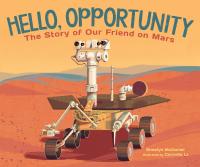
The small Mars rover was only expected to last for three months, but “she” lasted for 15 years. Opportunity (aka Oppy) communicated successfully helping scientists to learn more about the Red Pplanet. Backmatter and a timeline for the anthropomorphized rover allow the book to be read in different ways, sure to intrigue budding space-goers.
Hello, Opportunity: The Story of Our Friend on Mars

As a young student, Mayor wondered: Is the mythical griffin based on ancient people’s interpretations of dinosaur bones? This biography shares her fascinating efforts to prove her theory correct and reveals other connections between science and human myth as well. (School Library Journal)
The Griffin and the Dinosaur: How Adrienne Mayor Discovered a Fascinating Link Between Myth and Science

With engaging text, photographs, and vivid paleoart, this biography introduces Mary Anning, the Victorian fossil hunter and self-taught scientist who changed scientific thinking about prehistoric life and would become one of the most celebrated paleontologists of all time. Mary Anning grew up on the south coast of England in a region rich in fossils. As teenagers, she and her brother Joseph discovered England’s first complete ichthyosaur. Poor and uneducated, Anning would become one of the most celebrated paleontologists ever, though in her time she supported herself selling by fossils and received little formal recognition.
Fossil Hunter: How Mary Anning Changed the Science of Prehistoric Life

Think you know about dinosaurs? Think again! Paleontologist Steve Brusatte brings young scientists and readers everywhere into his world of massive herbivores and fearsome predators, daily unexpected discoveries, and all the new science used to learn about some of the world’s oldest beings.
